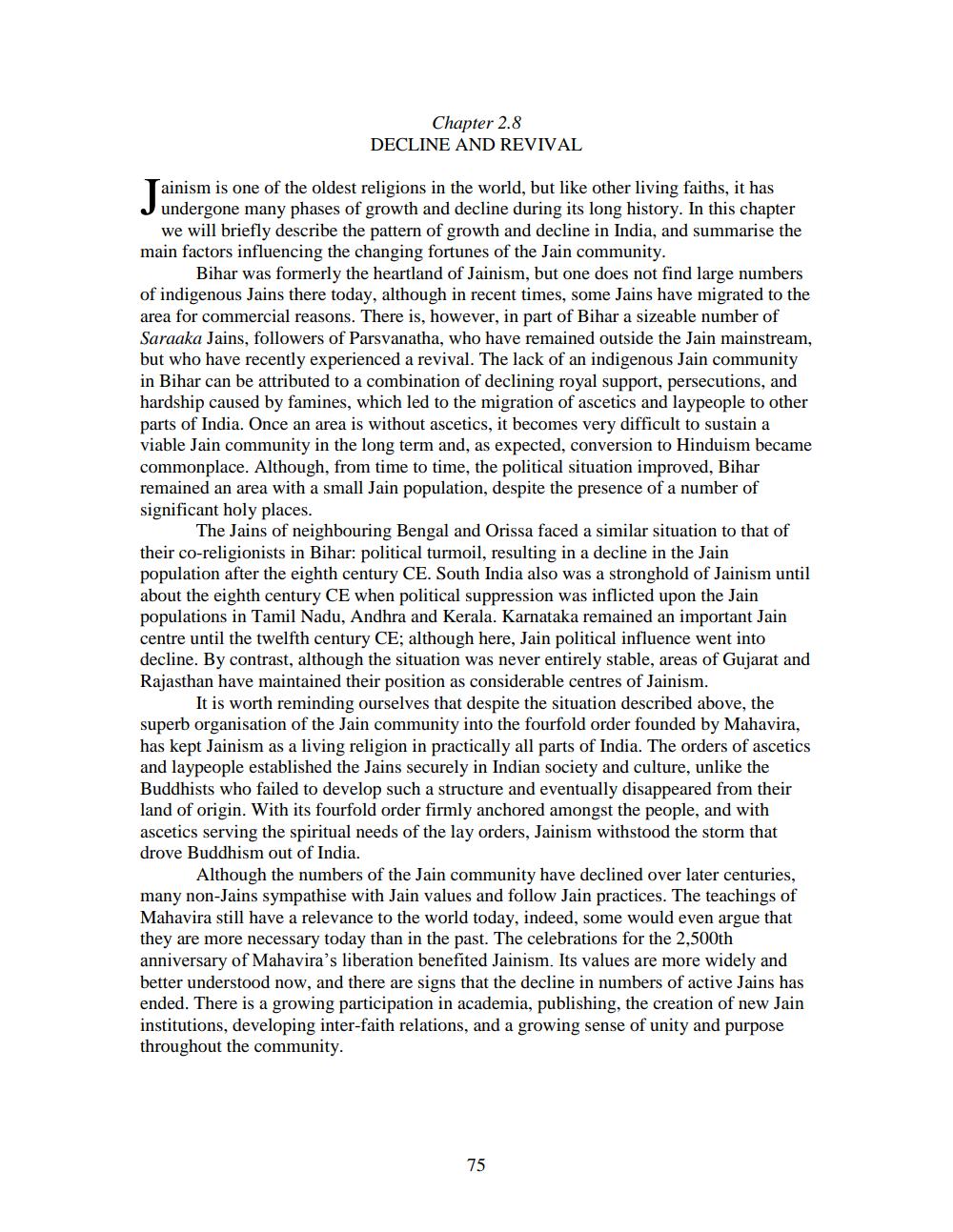________________
Chapter 2.8 DECLINE AND REVIVAL
ainism is one of the oldest religions in the world, but like other living faiths, it has undergone many phases of growth and decline during its long history. In this chapter
we will briefly describe the pattern of growth and decline in India, and summarise the main factors influencing the changing fortunes of the Jain community.
Bihar was formerly the heartland of Jainism, but one does not find large numbers of indigenous Jains there today, although in recent times, some Jains have migrated to the area for commercial reasons. There is, however, in part of Bihar a sizeable number of Saraaka Jains, followers of Parsvanatha, who have remained outside the Jain mainstream, but who have recently experienced a revival. The lack of an indigenous Jain community in Bihar can be attributed to a combination of declining royal support, persecutions, and hardship caused by famines, which led to the migration of ascetics and laypeople to other parts of India. Once an area is without ascetics, it becomes very difficult to sustain a viable Jain community in the long term and, as expected, conversion to Hinduism became commonplace. Although, from time to time, the political situation improved, Bihar remained an area with a small Jain population, despite the presence of a number of significant holy places.
The Jains of neighbouring Bengal and Orissa faced a similar situation to that of their co-religionists in Bihar: political turmoil, resulting in a decline in the Jain population after the eighth century CE. South India also was a stronghold of Jainism until about the eighth century CE when political suppression was inflicted upon the Jain populations in Tamil Nadu, Andhra and Kerala. Karnataka remained an important Jain centre until the twelfth century CE, although here, Jain political influence went into decline. By contrast, although the situation was never entirely stable, areas of Gujarat and Rajasthan have maintained their position as considerable centres of Jainism.
It is worth reminding ourselves that despite the situation described above, the superb organisation of the Jain community into the fourfold order founded by Mahavira, has kept Jainism as a living religion in practically all parts of India. The orders of ascetics and laypeople established the Jains securely in Indian society and culture, unlike the Buddhists who failed to develop such a structure and eventually disappeared from their land of origin. With its fourfold order firmly anchored amongst the people, and with ascetics serving the spiritual needs of the lay orders, Jainism withstood the storm that drove Buddhism out of India.
Although the numbers of the Jain community have declined over later centuries, many non-Jains sympathise with Jain values and follow Jain practices. The teachings of Mahavira still have a relevance to the world today, indeed, some would even argue that they are more necessary today than in the past. The celebrations for the 2.500th anniversary of Mahavira's liberation benefited Jainism. Its values are more widely and better understood now, and there are signs that the decline in numbers of active Jains has ended. There is a growing participation in academia, publishing, the creation of new Jain institutions, developing inter-faith relations, and a growing sense of unity and purpose throughout the community.




